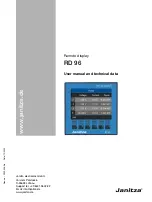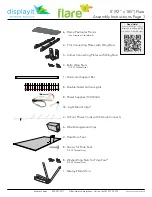
English
MSP7 STUDIO/MSP5 STUDIO/SW10 STUDIO Owner’s Manual
5
Setting Up for Superior
Monitor Sound
Setting Up for Superior
Monitor Sound
Unlike most other audio and production gear, the way speakers are set up in a room has a dra-
matic effect on the final sound. This short tutorial provides a basic guide to help you maximize
the performance of your Yamaha MSP-series monitor speakers.
Listening vs. Monitoring
You’d think that the requirements for "listening" and
"monitoring" would be the same, but that is not always the
case. A great listening system can be a great monitoring
system, and vice-versa, but in most cases you’ll miss details
that are essential to producing the best possible mix on a
system that’s set up purely for musical enjoyment. The dif-
ference is somewhat similar to the difference between a
retouched glamour portrait and the original in which every
blemish is clearly visible. The model looks a lot better in the
retouched photo, but the reality is in the original un-
enhanced version. As mixing engineer, or producer, or
sonic artist, you’ll want to hear the details so that you can
create a perfectly balanced mix that will sound good on
the widest possible range of audio systems — and that can
mean anything from high-ticket boutique audio compo-
nents in a properly-designed listening room right down to
the boom box on top of the fridge in the kitchen. You
don’t want problems hidden by poor monitor perfor-
mance to sabotage your sound on other systems.
The legendary Yamaha NS10M became a standard
monitor in the music and sound industry (and is still in use
in many studios throughout the world) for precisely that
reason: it offered flat response and excellent resolution that
allowed engineers and producers to hear subtle details that
make the difference between good and great sound. The
MSP-series monitors carry on the tradition with accuracy
and detail that can help you make great mixes, while let-
ting you monitor for long stretches with minimum fatigue.
If you’re connecting your MSP speak-
ers directly to a mixer such as one of the
Yamaha MG-series mixers, they should
usually be connected to the mixer’s "C-R"
outputs or MONITOR outputs so that
you can control the monitor level with-
out affecting the level of the signal sent
to the mixer’s main bus, which will usu-
ally be feeding your recorder or DAW
(Digital Audio Workstation) in a produc-
tion type setup.
input
input
C-R
OUT
L
R
ST
OUT
MG Series
L
R


































